Rockefeller Center, originally known as Radio City, is a complex of buildings developed in the midst of the Great Depression. Initially, the complex consisted of fourteen buildings, the 70-story RCA building being the tallest.
History
Metropolitan Opera
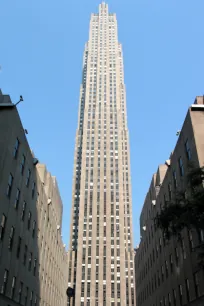
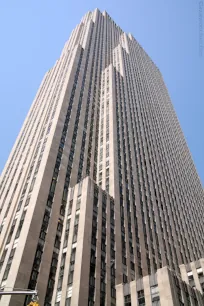
The area where Rockefeller Center is located was originally planned as the new location for the Metropolitan Opera. At the time, the area, situated between 48th and 51st streets and Fifth and Sixth Avenues, was a red-light district owned by Columbia University. John D. Rockefeller Jr. leased the area on behalf of the Metropolitan Opera.
The design of the complex was created by the American architect Benjamin Wistar Morris. His plan, influenced by the Grand Central Terminal complex, included a landscaped garden and a monumental Opera House as well as tall office towers, shops and terraces. The buildings would be connected by a series of bridges and walkways.
However, the stock market crash of 1929 caused the Metropolitan Opera to abandon the ambitious project. Rockefeller then launched a plan for a corporate complex to house the new radio and television corporations. Radio City was born.
Radio City
One of the first buildings completed was the RCA Building (now 30 Rockefeller Plaza), which served as the headquarters of the Radio Corporation of America. The tower, clad in Indiana limestone, is at 70 stories and 256 meters / 850 feet the tallest of the complex. Its design by Raymond Hood – also known from the American Radiator Building in New York and the Tribune Tower in Chicago – was the basis for all future buildings at Radio City.
To lure tenants during the Depression, all efforts were made to ensure efficient use of the available floor space. Thanks to the setbacks, each office was assured of natural light. Other assets were fast elevators, air-conditioning and excellent underground connections to the subway.
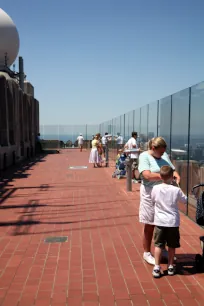
Top of the Rock
The observation deck atop Rockefeller Center’s 30 Rockefeller Plaza – promoted as ‘Top of the Rock’ – boasts panoramic views of Central Park and the Empire State Building.
History
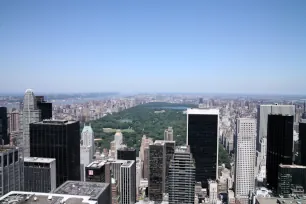
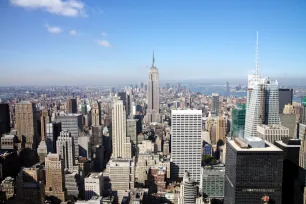
When the former RCA building opened in 1933 it featured a roof terrace designed as the deck of an ocean liner. Ventilation pipes had the shape of ocean liner funnels, and visitors could relax in deck chairs. The observation deck remained open until 1986. By then the number of visitors had dropped while costs increased. At the same time, the expansion of the popular Rainbow Room restaurant on the 65th floor cut off the elevator access to the roof, leading to the deck’s closure.
The Observation Deck Today
Fortunately, the observation deck reopened again in November 2005, finally giving the nearby Empire State Building‘s observatory some competition. After a renovation of some 75 million dollars, the Art Deco style observation deck can be visited once again; only the deck chairs have disappeared.
A separate entrance at West 50th Street leads to the elevators. In the elevator, important historic events since 1933 are projected on the transparent roof.
There are in total three levels open to the public, including the roof terrace. The first is on the 67th floor and is completely covered. The observation deck on the 69th floor has glass windshields, while the 70th floor is completely open to the elements, offering visitors a fabulous 360 degree view.
Lower Plaza
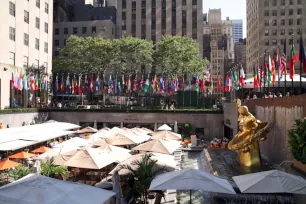
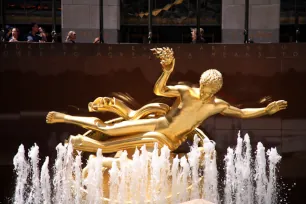
By 1940 Radio City, which became known as Rockefeller Center, consisted of fourteen buildings, located around a central sunken plaza, the Lower Plaza. From the plaza, you have a nice view of the Prometheus Statue and 30 Rockefeller Plaza.
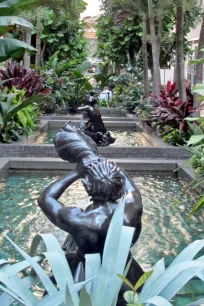
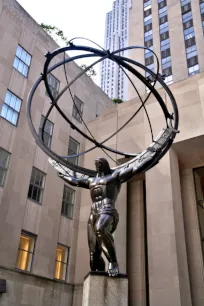
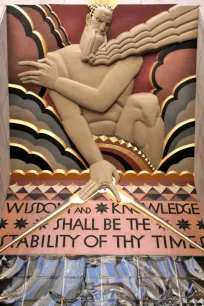
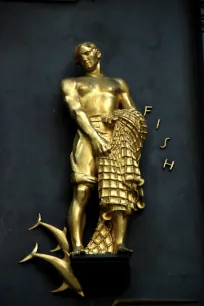
Ever since 1933, the famous annual Christmas tree lighting ceremony, which marks the unofficial start of New York’s holiday season, has taken place here. An enormous tree, decorated with thousands of lights, is installed in the area behind the Prometheus Statue. Around the same time, the sunken plaza is converted into a popular outdoor ice skating rink.
The plaza is connected to Fifth Avenue via a pedestrian street decorated with statues and flowers. This street is known as the Channel Gardens. The Channel Gardens are flanked by two six-story buildings with landscaped rooftops: the British Empire Building and La Maison Française. Another important building in Rockefeller Center is Radio City Music Hall. When built, it was the largest indoor theater in the world, with a seating capacity of around six thousand. Guided tours give you the opportunity to catch a glimpse of the spectacular Art Deco interior.
Art
Rockefeller Center is also known for the many works of art that enrich the complex. Many of them portray the ideals of Enlightenment, such as ‘Progress through Science’.
The most famous artwork at Rockefeller Center is the Prometheus sculpture, a gilded bronze work created in 1934 by the American sculptor Paul Manship. Hovering over a fountain at the sunken plaza, the sculpture shows Prometheus, who returns the stolen fire to mankind. He is shown hovering over a band with Zodiac signs. Another famous sculpture, from 1937, is the 15-feet-tall (4.5 m.) bronze statue of Atlas, a creation of Lee Lawrie. The statue, opposite St. Patrick’s Cathedral, shows the titan holding the celestial sphere.
The exterior of the buildings at Rockefeller Center is also decorated with eye-catching artwork. One of the most notable is the Art Deco relief entitled ‘Knowledge and Wisdom’, on the facade of 30 Rockefeller Plaza, also created by Lawrie. A huge stainless steel relief enlivens the entrance of the Associated Press Building. The work of the Japanese-American artist Isamu Noguchi symbolizes the different services of the AP news network.
The lobbies of the buildings at Rockefeller Center are also interesting, in particular that of the former RCA Building, which is decorated with majestic murals created in 1933 by José Maria Sert and Frank Brangwyn.
A City in the City
Rockefeller Center – known as a ‘city in the city’ – is an exceptional example of civic planning. All buildings share a common design style, Art Deco, and are connected to each other via an underground concourse, the Catacombs. The complex is nevertheless well integrated in the city of New York, especially along Fifth Avenue. In 1959 and the early seventies, Rockefeller Center was expanded with five additional buildings along Sixth Avenue.

